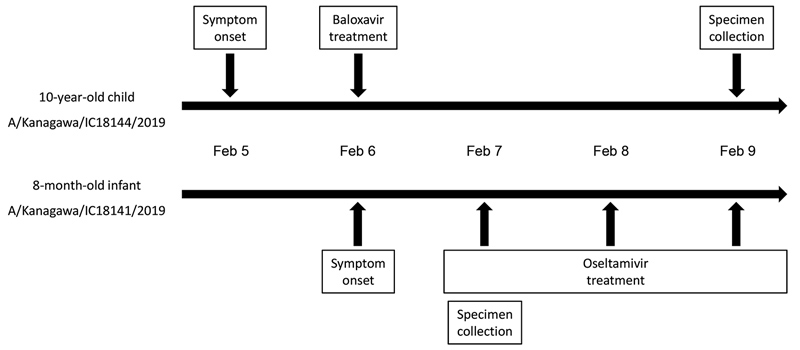Volume 25, Number 11—November 2019
Dispatch
Human-to-Human Transmission of Influenza A(H3N2) Virus with Reduced Susceptibility to Baloxavir, Japan, February 2019
Figure

Figure. Clinical timeline of 2 siblings infected with mutant influenza A(H3N2) viruses encoding the polymerase acidic I38T substitution, Japan, February 2019. Whole-genome sequences of A/Kanagawa/IC18144/2019 (isolate no. EPI ISL 346656) and A/Kanagawa/IC18141/2019 (isolate no. EPI ISL 345215) are available from the GISAID EpiFlu database (http://www.gisaid.org).
Page created: October 16, 2019
Page updated: October 16, 2019
Page reviewed: October 16, 2019
The conclusions, findings, and opinions expressed by authors contributing to this journal do not necessarily reflect the official position of the U.S. Department of Health and Human Services, the Public Health Service, the Centers for Disease Control and Prevention, or the authors' affiliated institutions. Use of trade names is for identification only and does not imply endorsement by any of the groups named above.